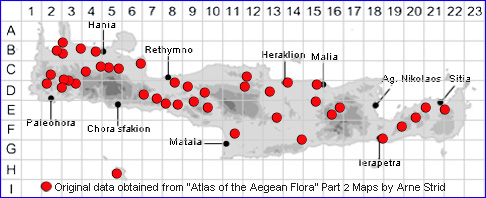
SPECIES DESCRIPTION
MEDICAGO MUREX
Family and Genus:- See- LEGUMINOSAE/Subgen. CYMATIUM
Common Name:- None
Homotypic Synonyms:- Medicago murex var. aculeata, Medicago tribuloides
subsp. murex.
Meaning:- Medicago (Gr) Median-grass, A name used by the Greek physician
and botanist Dioscorides, from a Persian name for lucerne, or medick.
Murex (L)
General description:- Sparsely pilose annual, usually branched from the base.
Stems:-
1) 15-40 cm. ascending.
Leaves:-
1) Leaflets, obcordate or obtriangular.
2) Stipules, lanceolate to ovate-lanceolate, dentate to incise-dentate.
3) At least the mature leaflets glabrous.
Flowers:-
1) Peduncles, slender, somewhat longer than the leaves.
2) Inflorescence, 1- or 2-flowered.
3) Corolla, 4-5 mm, lemon yellow.
Fruit:-
1) Legume, 5-9 mm in diam, in a right-handed spiral of 5-9 turns sometimes not
spiny, submarginal and marginal veins distinct forming 3 keels; spines usually
a) coils, with 3 narrow furrows on the back, surface, strongly appressed and
almost confluent in mature fruits.
b) spines, usually long, broad, obtuse, rarely acute and up to 1/2 as long as the
diam., of the legume.
Key features:-
1) Legume, always in a right-handed spiral.
2) Margin, with 3 keels.
3) Spines, usually long, acute.
Habitat:- Damp meadows in sandy habitats by the coast, seasonally damp
patches in dry open shrubby vegetation, by streams and tracks, generally on
noncalcareous substrates. 0-900 m.
Distribution:- Scattered in coastal areas of W Greece. - widespread in the
Mediterranean region. Sparsely scattered across Crete, but more common in the
west.
Flowering time:- April to early June.
Photos by:- A.N. Other
